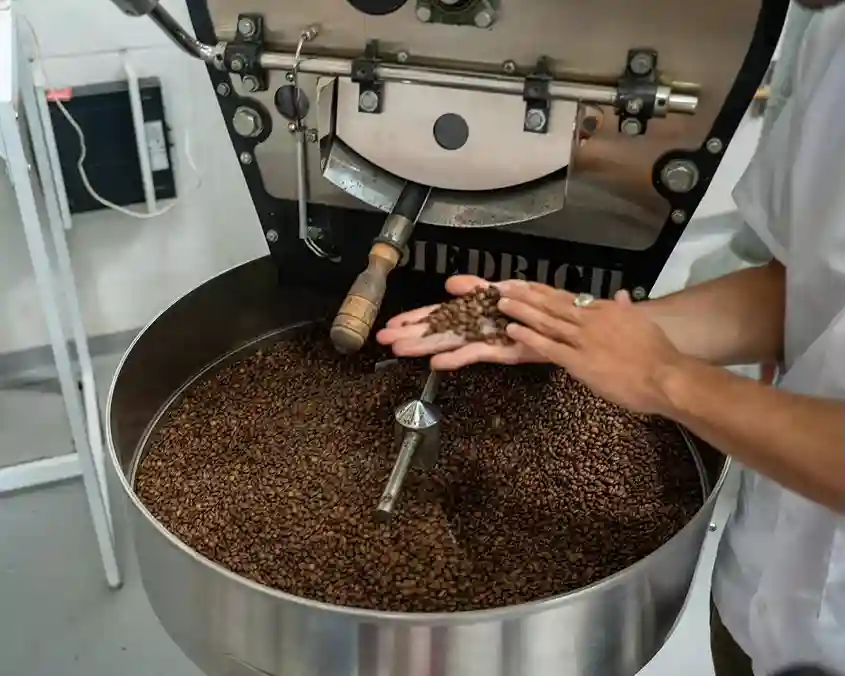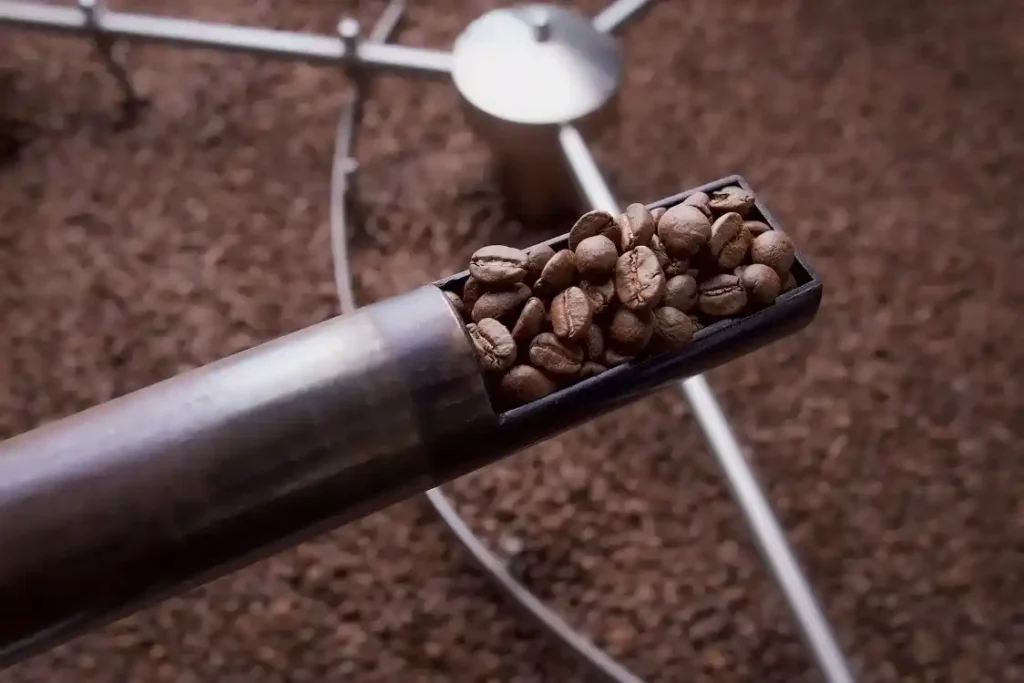Introduction to the world of coffee roasting
No other stage affects coffee as much as roasting, which determines not only the aroma but also the flavor, its depth, richness and aftertaste. Proper roasting of coffee beans can bring out the unique flavor of the coffee variety, climate, and soil in which they were grown. In this process, a roaster plays a key role – special devices that provide controlled heat treatment of coffee beans.
How coffee roasters work
The roasting process begins with heating the grain, which gradually changes its color, flavor and structure. Modern roasters allow you to precisely adjust the temperature, drum speed, and roasting time. Controlling these parameters is critical: deviations of a few seconds or degrees can significantly change the taste of coffee.
During heat treatment, the moisture level also changes. At first, it actively evaporates, creating pressure inside the grain, which causes it to expand rapidly until the first crack. It is at this point that the grains move from the state of raw materials to the state of a full-fledged roasted product. An experienced roaster closely monitors these stages to achieve the desired coffee flavor.
Heat is transferred through a stream of hot air or direct contact with the surface. It is important to prevent excessive overheating, as this causes the coffee to taste excessively bitter, which prevents you from experiencing the natural coffee notes.

Classification of roasters by type of energy source
1. Electric roaster
These models are ideal for rooms without gas supply. They are safe, compact, and easy to maintain. Disadvantages include slower heating and expensive electricity.
2. Gas roaster
They are more economical, heat up quickly, and provide natural roasting dynamics. Often used in coffee shops and coffee production facilities.
3. Comparison of electric and gas models
The choice depends on your needs: electric models are more convenient for home use, while gas roasters are better for business. It is important to consider the characteristics of the room, budget, and volume of coffee.
For mobile coffee shops with limited space, compact electric models that do not require special ventilation systems are often chosen.
Types of roasters by purpose
1. 1. Home roaster
Compact and easy to use. Frying capacity up to 500 g. Ideal for home experiments with flavor composition.
2. Semi-professional roaster
Capable of roasting coffee beans up to 10 kg, suitable for coffee shops. They provide a consistent taste and flexible settings.
Some models allow you to save the settings in the device’s memory, so you can re-acquire your favorite profile. This is especially valuable for coffee shops that strive for consistent quality.
3. Professional industrial roaster
Used for large volumes. Automated, efficient, often equipped with intelligent drum mechanisms.
Key technical characteristics
The main parameters include power, drum volume, hot air supply system, type of heating, and temperature control accuracy. The material of the body, thermal insulation, and the presence of touchscreen displays and indicators are also important.
Models with a programmable timer, automatic roasting profiles, and smartphone control are available on the market.
These functions allow for more precise process control and minimize the human factor.

Design and equipment features
Many roasters use drum systems to ensure even roasting. Additionally, there are coolers, smoke filters, control panels, and Wi-Fi connections. Some models have several temperature zones and moisture meters.
Criteria for choosing a roaster
When choosing, it is important to take into account the frequency of use, the amount of coffee you plan to roast, your budget, and your experience. Space characteristics (ventilation, power supply), price to functionality ratio. Everything matters.
Leading manufacturers and models
Among the leaders: Probat, Diedrich, Giesen, Aillio, Gene Cafe. They offer growers of different levels, from household to industrial. For example, Giesen drum growers are known for their reliability and precision.
It is also worth paying attention to new brands made in Asia that offer competitive models at an attractive price. Some of them are already actively entering the European market and are receiving positive feedback.

Operation and maintenance
Before each launch, check that the roaster is clean and in good working order.
The new models feature component wear warning indicators that help plan preventive maintenance without unnecessary production stoppages. This significantly increases operational efficiency. Regular cleaning, monitoring of temperature sensors, and software updates (for digital models) are mandatory procedures. Avoiding overheating extends the life of the device.
Economic aspects
Despite the initial investment, roasting your own coffee allows you to save money on buying finished products. An industrial roaster pays for itself quickly due to the scale of production, while a home roaster pays for itself thanks to the control of the process and the choice of raw materials.
Conclusions and recommendations
Today, a roaster is not only a tool, but also the key to creating the perfect customized drink. The choice depends on experience, needs, and budget. Technology is constantly improving, opening up new horizons for roasting and flavor profile development.
New technological solutions are emerging every year: energy-efficient heating elements, artificial intelligence for heat treatment analysis, and improved ergonomics. The future belongs to innovation and automation.








